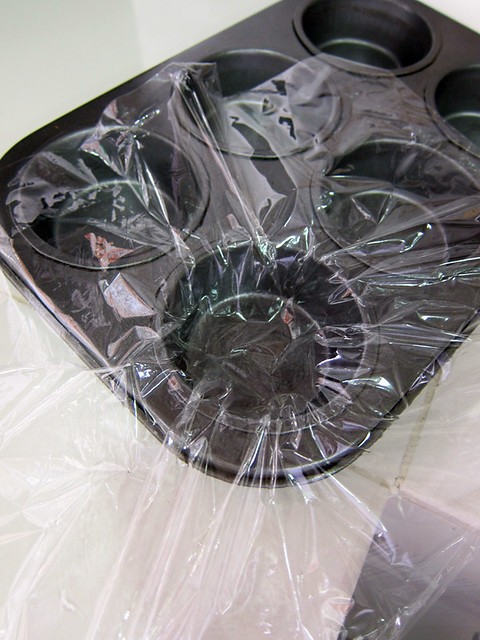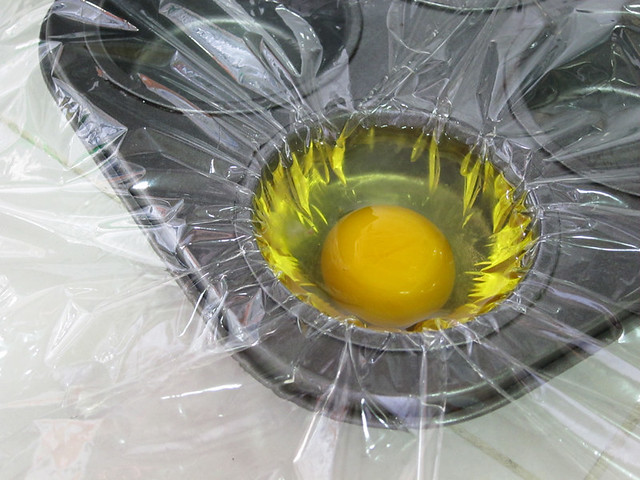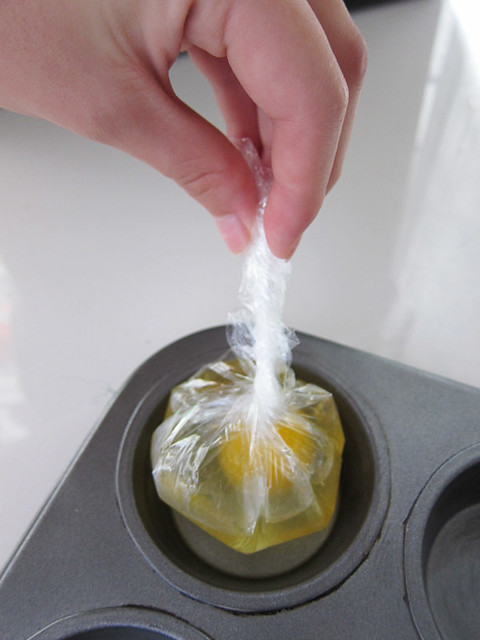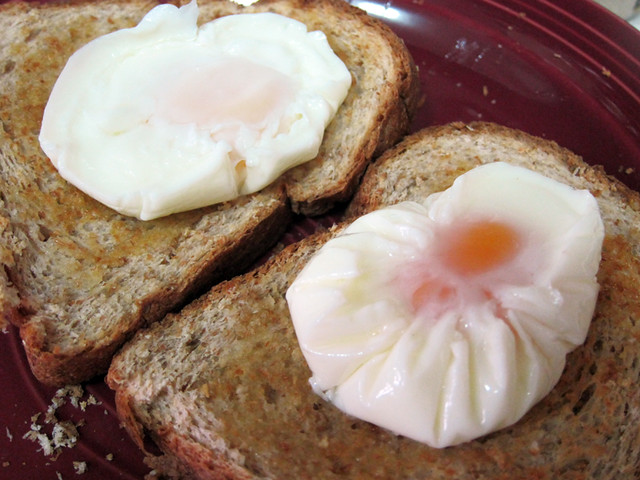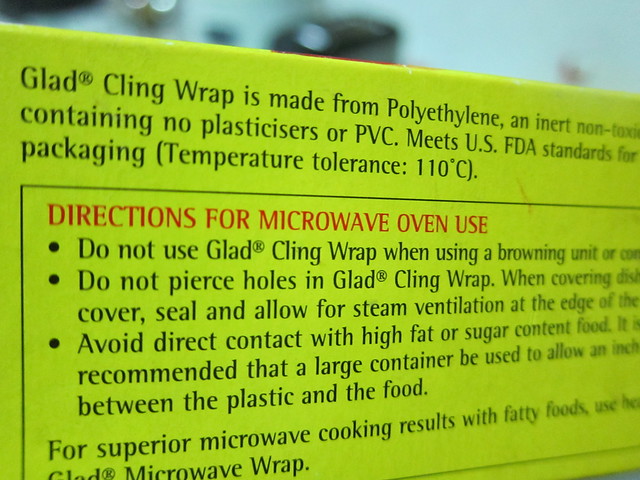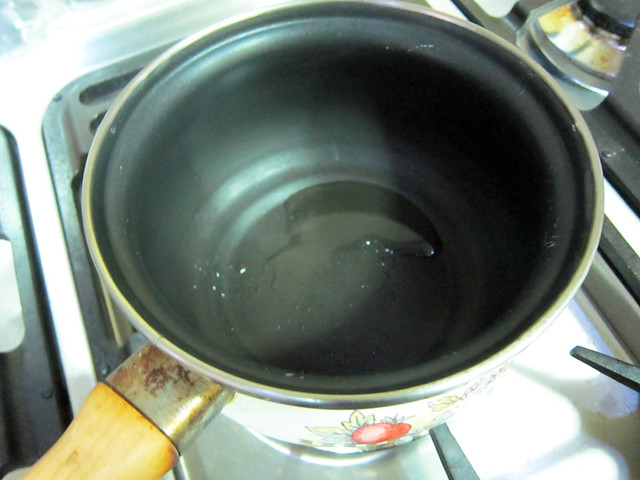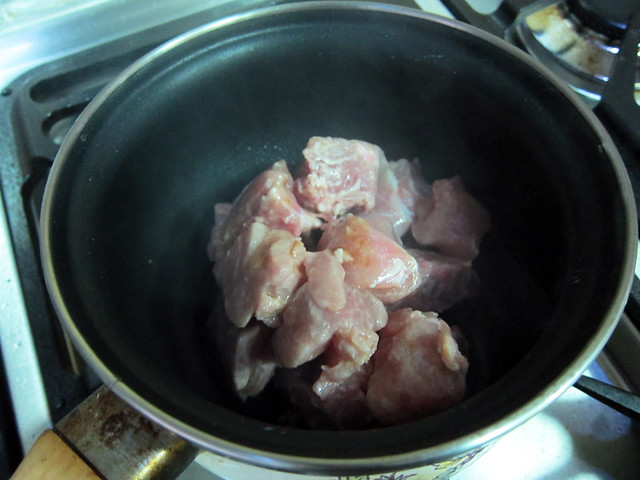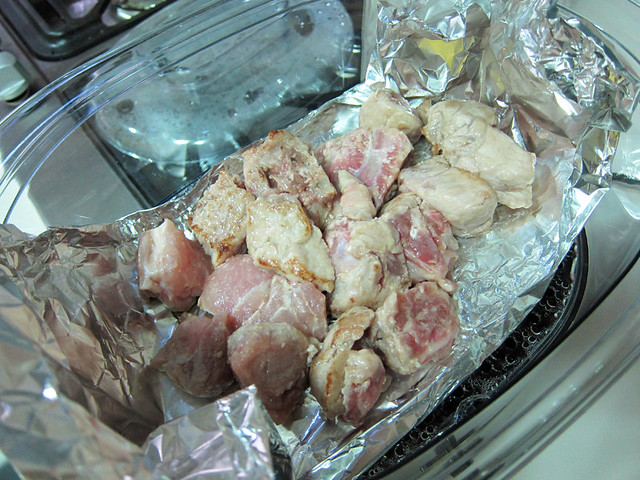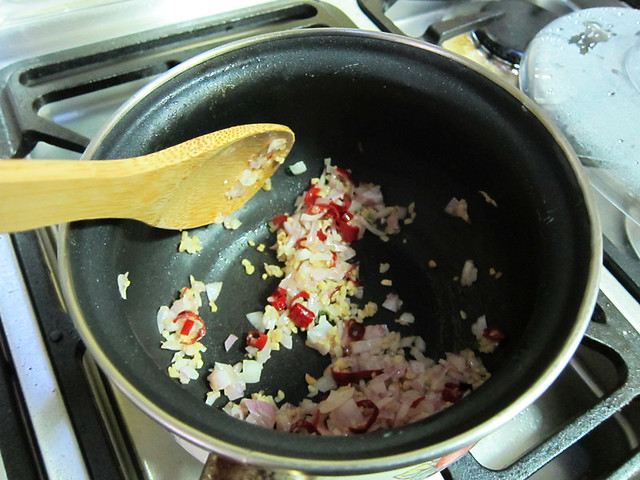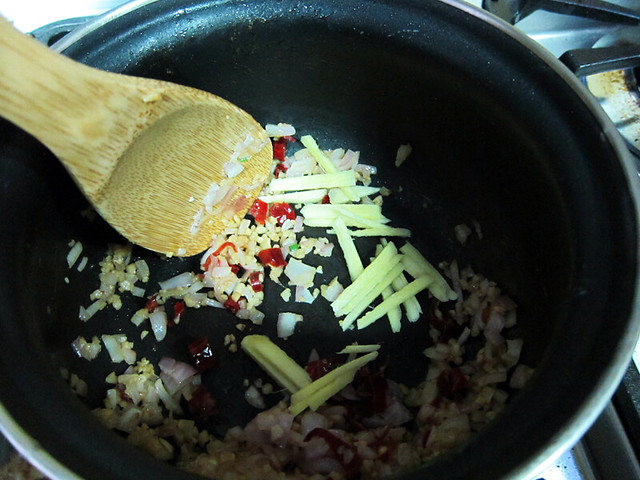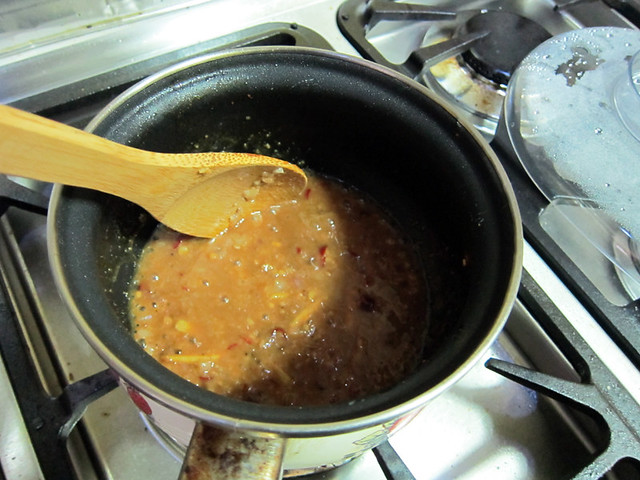It’s extremely hard for 2 people to finish a loaf of bread before its expiration date. So we freeze bread to keep them longer and heat it up the in the toaster whenever a hankering for bread emerges.
That means I’d be eating toasts up until we get fresh bread. A great idea for my BF who LOVES toasts but I’d much prefer soft, pillowy, sinful white bread any day. And hence, I decided to make bread & butter pudding using bread that we couldn’t finish in time.
This recipe is adapted from BBC Food. Very easy and straightforward, just the kind of recipes that I love to keep.
For the pudding:
- Enough butter for spreading 6-8 slices of bread as well as greasing bowl
- 6 – 8 slices of white bread
- 50g sultanas
- Cinnamon powder
- Nutmeg powder (or freshly grated ones if you’ve got it)
For the custard:
- 250ml of milk
- 150ml of whipping cream
- 2 eggs
- 25gm of granulated sugar
# – First, butter 6 slices of white bread and cut each into half, forming triangles.

# – Then lay 4 slices at the bottom of a lightly greased heat-proof bowl. Sprinkle some raisins all over.
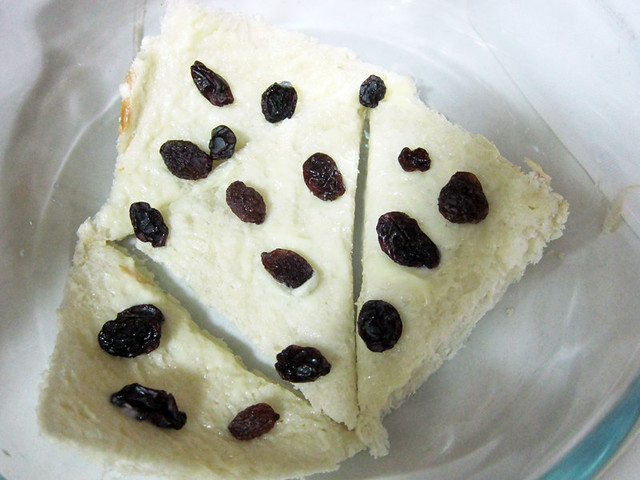
# – Add a sprinkling of cinnamon powder.

# – Add more layers of bread, raisins and cinnamon powder until you run out of bread.

# – Top off with a sprinkling of nutmeg for that extra oomph. If you’ve got no nutmeg, just cinnamon will do too ;)

Set the bread aside. It’s time to make the delicious custard!
# – Whisk eggs and granulated sugar in a bowl until the colour turns pale.
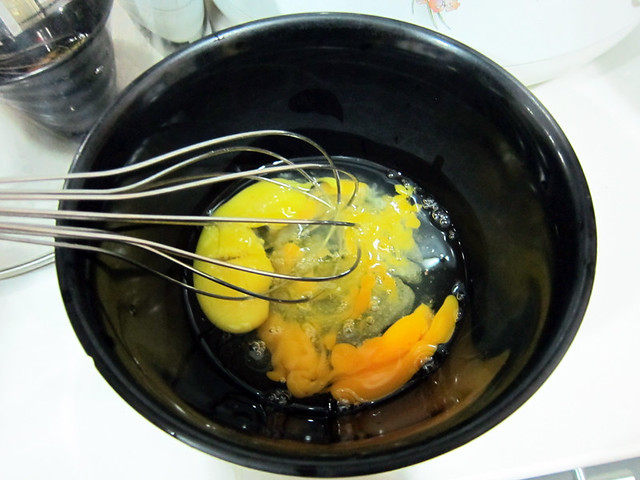
# – Heat up whipping cream and milk in a pot till scalding but not boiling.
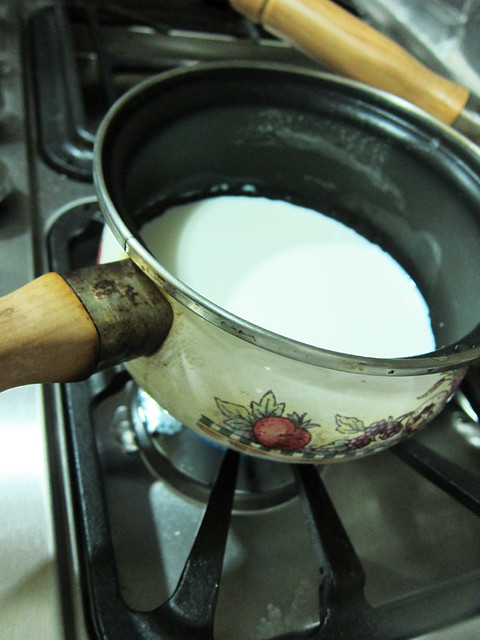
# – Pour egg mixture into the milk mixture and whisk till combines. Remove from heat.
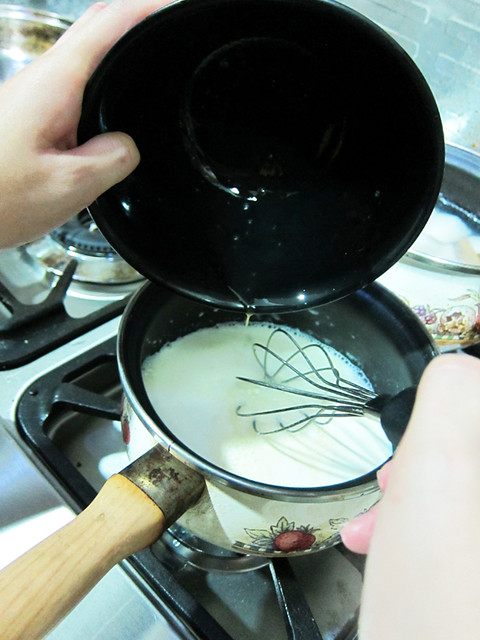
# – Strain the mixture to remove the stringy egg bits. Custard is now done :D

# – Pour the custard into the bread up until just the bottom of top layers are submerged. You will have more custard left so stick it in the fridge for some awesome chilled custard to serve with the pudding!
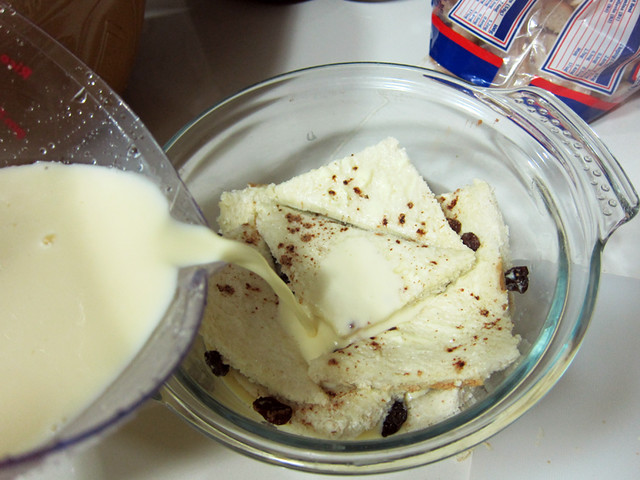
# – Stick it in a preheated oven at 175 degrees celcius for 30-40 minutes or until top is brown.
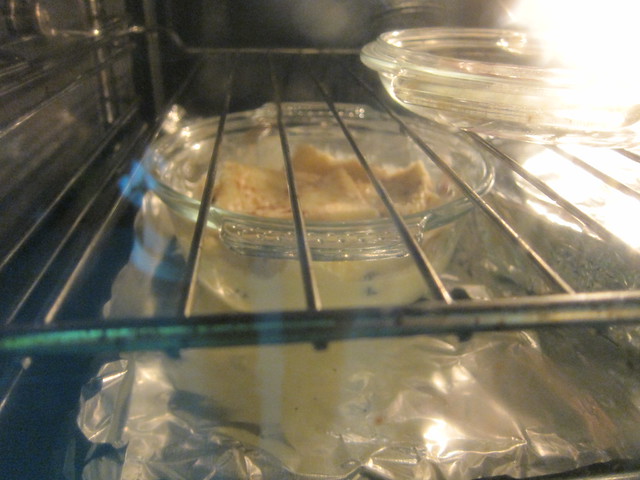
# – After 30 minutes, bread and butter pudding, DONE.

# – The beautiful, creamy, delicious bread & butter pudding.
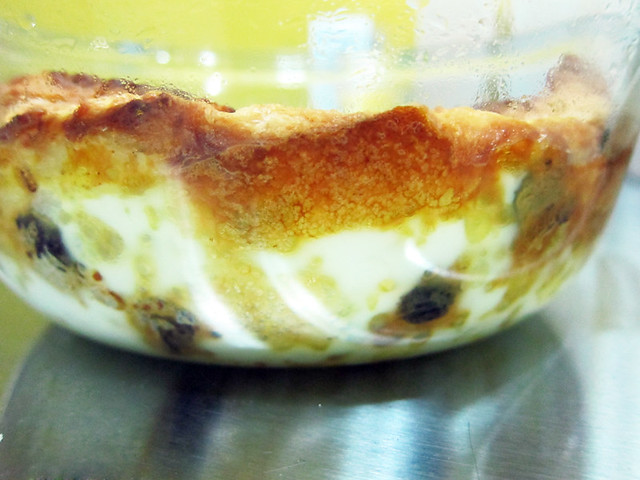
Pour the chilled custard you’ve made earlier over the pudding and you’ve got yourself a delicious, belly-warming and very yummy dessert.
# – YUMMEH!
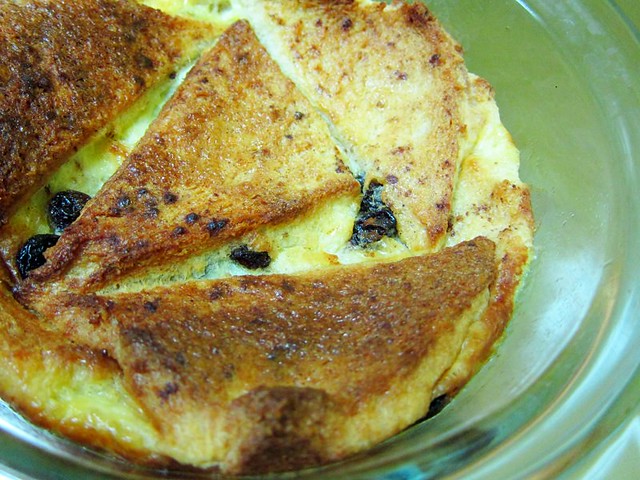
And yes, I can now have toasts because I want to and not because I have to!

